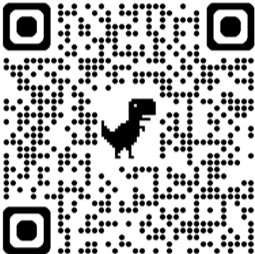Oxygenation
NUR102
Create multiple-choice games on Wisc-Online and play them on our Chakalaka mobile app!
But that's not all! Explore educational games created by others. Simply search by category or enter agame code number and dive into a world of learning and fun.
Download the Chakalaka mobile app here:

Topics of this game:
- The nurse has been asked to evaluate a child who is having an asthma attack at school. The nurse is to expect which of the following lung sounds?
- COPD encompasses which two diseases?
- COPD makes it difficult to ___________ air
- A patient is seen in the clinic with complaints of frequent respiratory infections and a productive cough. The patient states they have had the symptoms off and on over the past 2-3 years. Upon examination the nurse notes the patient has a red-blue color to the skin. The nurse suspects the patient has
- The nurse understands that it is important to not put patients who have COPD on higher rates of supplemental oxygen because
- Medications that are used to provide rapid relief of breathing difficulties by bronchodilation and increasing ciliary action are called
- These medications relax the smooth muscle of the bronchi but can cause tremors, tachycardia, and dry mouth. Not to be taken if pregnant!
- These medications reduce inflammation in the bronchioles but should not be stopped suddenly. Watch throat and mouth for lesions and monitor glucose levels.
- A patient is newly diagnosed with COPD due to chronic bronchitis. You’re providing education to the patient about this disease process. Which statement by the patient indicates they understood your teaching about this condition?
- An alarm beeps notifying you that one of your patient’s oxygen saturation is reading 89%. You arrive to the patient’s room, and see the patient comfortably resting in bed watching television. The patient is already on 2 L of oxygen via nasal cannula. The patient is admitted for COPD exacerbation. Your next nursing action would be:
- A patient is ordered at 1400 to take Theophylline. You’re assessing the patient’s morning lab results and note that the Theophylline level drawn this morning reads: 15 mcg/mL. You’re next nursing action is to?
- A patient is seen for complaints of dyspnea upon exertion, weight loss and as the nurse, you notice the chest seems to have a large diameter and the fingers are clubbed. The patient has recently retired from a chemical plant where he has worked for several years. You suspect the patient has
- You are providing care to a patient with a chest tube. On assessment of the drainage system, you note continuous bubbling in the water seal chamber and oscillation. Which of the following is the CORRECT nursing intervention for this type of finding?
- You're assessing a patient who is post-opt from a chest tube insertion. You note there is 50 cc of serosanguinous fluid in the drainage chamber, fluctuation of water in the water seal chamber when the patient breathes in and out, and bubbling in the suction control chamber. Which of the following is the most appropriate nursing intervention
- While suctioning a patient with a tracheostomy tube, the nurse knows it is important to
- A patient has exercise-induced asthma. Which of the following actions can the patient perform to help prevent an attack during exercise.
- A common respiratory infection seen during the fall and winter seasons that is spread via saliva and/or nasal secretions.
- When educating a parent regarding how to protect the other children in the home, it is important to let the parent know
- All children should receive the Synagis vaccine to prevent RSV.
- Sudden Infant Death is most commonly seen
- The first symptom seen in Sudden Infant Death is
- Which of the following is not a risk factor for SIDs?
- Reducing the risk of SIDs includes all of the following but
User comments are currently unavailable. We apologize for the inconvenience and are working to restore this feature as soon as possible.

